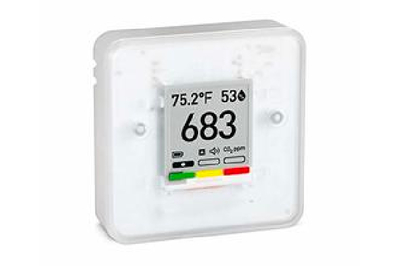The 3 Best Home Air Quality Monitors of 2024 | Reviews by Wirecutter - The New York Times
Most home air quality monitors are limited in their abilities—as well as their reliability—so if you're concerned about the air quality inside your home, the first thing we suggest you do is monitor the air outside, because outdoor conditions often determine indoor conditions.
There's no simpler way to do that than to use the Environmental Protection Agency's AirNow mobile app, available free on iOS and Android.
Searchable by zip code or place name, and presented on a map, AirNow's air quality readings come from direct measurements by hundreds of monitors around the US, offering an air quality forecast in addition to real-time data.
If you really want to know exactly what's going on with the air in your home, we recommend two monitors that we trust to be accurate, reliable, and easy to interpret and respond to.
Our pick

The EPA's free AirNow app is easily searchable, delivers air quality readings in almost every corner of the US, and lets you know in advance of upcoming air quality problems.
Buying Options
We recommend using the AirNow app as your first step because outdoor conditions usually cause any indoor air quality issues you may experience. Although AirNow isn't the only app of its kind, we found in our research that many other air quality apps simply repackage the data that the EPA stations gather, often without adding much clarity, new information, or interface improvements. Compared with AirNow, some apps make it harder to pinpoint your location, whereas others use a less complete network of monitoring stations to gather the data. AirNow offers you the simplest way to get the info and interpret what it means. And—unlike other apps we tested—it doesn't bombard you with ads the whole time.
Also great

Comprehensive and user-friendly, measuring seven air-quality factors (including CO2, PM2.5, VOCs, and radon), and offering both visual and app-based displays.
Buying Options
The Airthings View Plus monitors more air-quality conditions than any other device we've tested: CO2, VOCs, PM2.5 (fine particles), radon, humidity, temperature, and air pressure. For information-at-a-glance, Its readings are displayed on a screen on the device itself, and any concerns are indicated via a green-yellow-red LED. The companion Airthings app is easy to set up and sync with the device. It lets you check your air quality when you're away from home (or just in another room), and displays trend data via simple graphs, which can help pinpoint sources and patterns of air pollution (like rush-hour traffic, for example) so that you can take steps to mitigate chronic issues. The View Plus, unlike inexpensive monitors, uses high-quality sensors, like an NDIR (nondispersive infrared) CO2 sensor; reliable and robust, these have an expected lifespan of seven years.
Also great

The SAF Aranet 4 is one of the most accurate CO2 monitors available, and its measurements can act as an indicator of your indoor air quality.
Buying Options
The concentration of carbon dioxide (CO2) in indoor spaces is usually higher than in natural outdoor air, and it can rise to levels that impair cognitive function. The main reasons are the combustion of natural gas and of simply exhaling CO2. If you'd like to know how much CO2 is in your home's or office's air, the Aranet 4 is our pick. Its measurements are easy to read onscreen, as are its alerts when the level is getting too high. Its app also sends alerts, works with both iOS and Android, and adds seven-day trend monitoring to help you identify patterns of high CO2. And, helping to offset the cost, the high-quality sensor should last for up to seven years.
Comments
Post a Comment